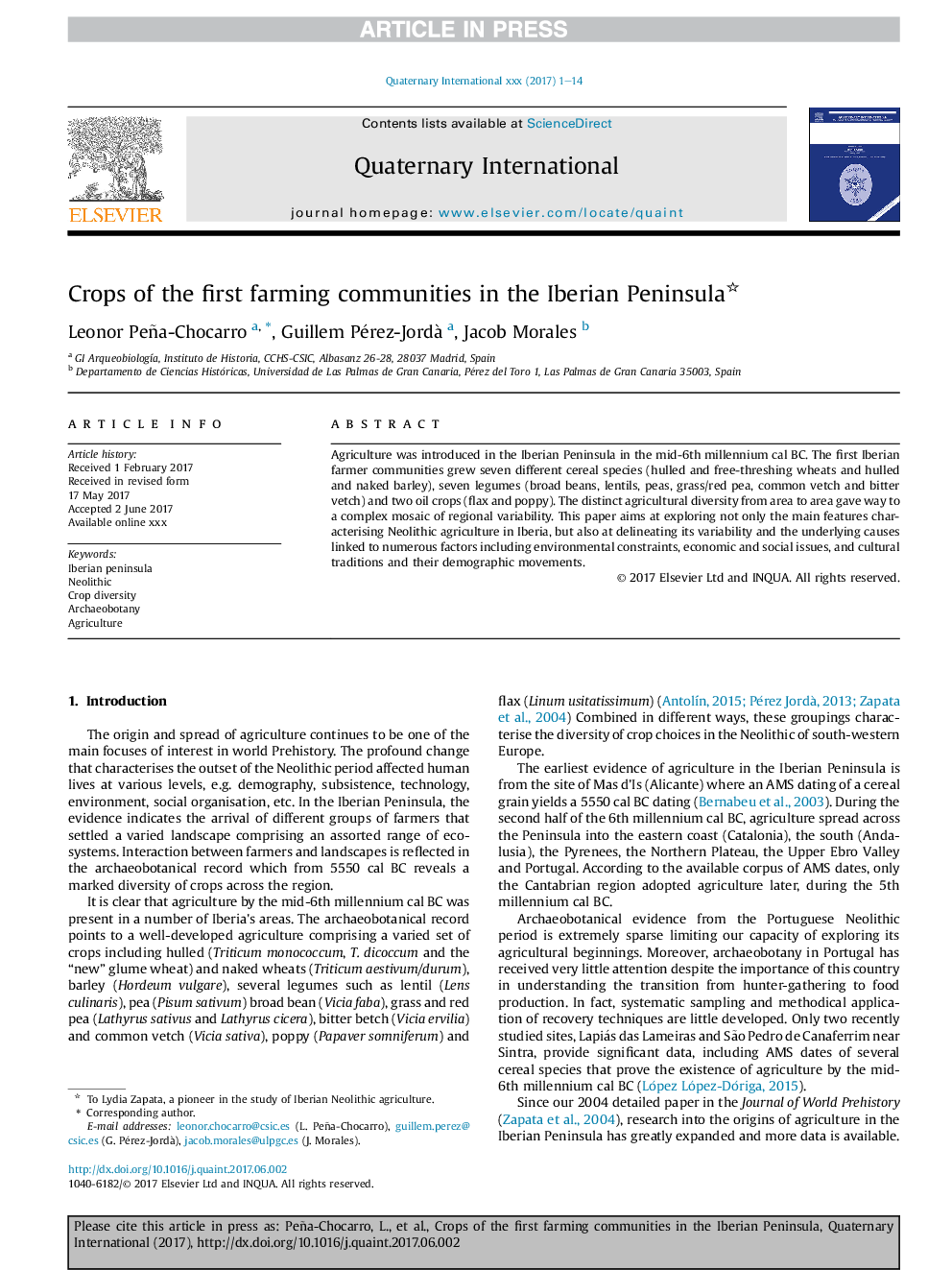| Article ID | Journal | Published Year | Pages | File Type |
|---|---|---|---|---|
| 7450176 | Quaternary International | 2018 | 14 Pages |
Abstract
Agriculture was introduced in the Iberian Peninsula in the mid-6th millennium cal BC. The first Iberian farmer communities grew seven different cereal species (hulled and free-threshing wheats and hulled and naked barley), seven legumes (broad beans, lentils, peas, grass/red pea, common vetch and bitter vetch) and two oil crops (flax and poppy). The distinct agricultural diversity from area to area gave way to a complex mosaic of regional variability. This paper aims at exploring not only the main features characterising Neolithic agriculture in Iberia, but also at delineating its variability and the underlying causes linked to numerous factors including environmental constraints, economic and social issues, and cultural traditions and their demographic movements.
Related Topics
Physical Sciences and Engineering
Earth and Planetary Sciences
Geology
Authors
Leonor Peña-Chocarro, Guillem Pérez-Jordà , Jacob Morales,
